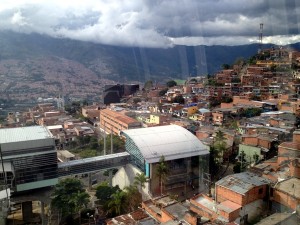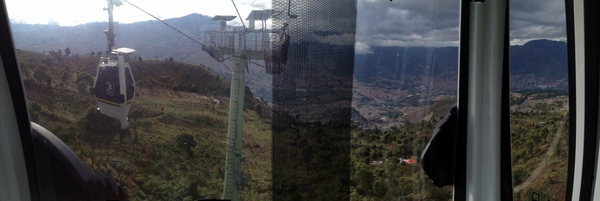
Today I did the Metro Cable, which is part of the transport system here in Medellín.
Yesterday’s walking tour with Pedro confirmed to me that I hadn’t been wrong when I said that I used to have such a negative impression of the city. This was one of the most violent cities in the world. So how did it improve?
Well one reason was the improvement situation under the Álvaro Uribe government, but the other was the city mayor, Sergio Fajardo, a former teacher. He brought in a policy that I think Pablo called democratic architecture, which used city planning to actually change the lives of its citizens.
In the height of the conflict, the city is very proud of the fact that they built a Metro, which is an elevated railway that has two lines serving the city.
But they realised (and I’d already read about this in an article in The Guardian and also covered here and here) that most people living in the barrios felt alienated from the city. It was difficult to get into the centre and they didn’t really even identify with the city.
The barrios are built up on the slopes of the mountains. They remind me of the favelas in Rio de Janeiro. So they have built cable cars that link these high barrios with the Metro, so now within minutes you can get to the centre of the city. In one dangerous barrio, Comuna 13, they have built a huge outdoor escalator, which reduces the time to go up the hill from something like 45 minutes to 6 minutes.
In Santo Domingo, where I was today, they built a new and amazingly modern library. Right in the middle of the barrio. Beside the cable car.
